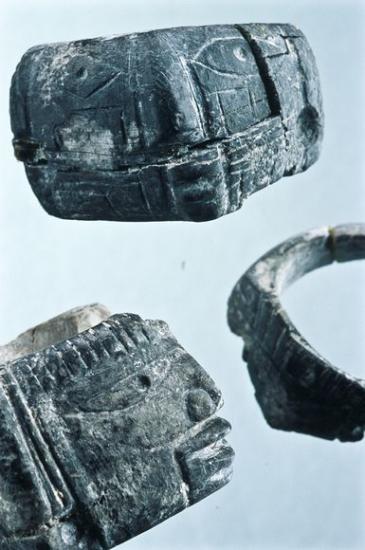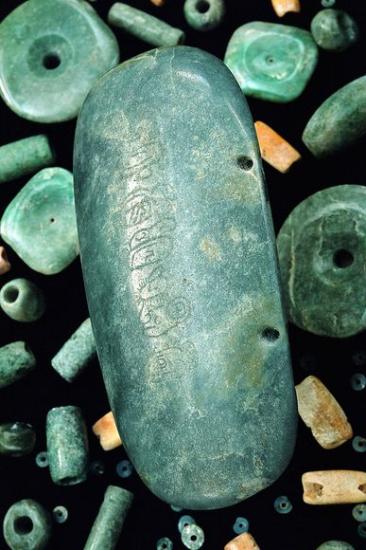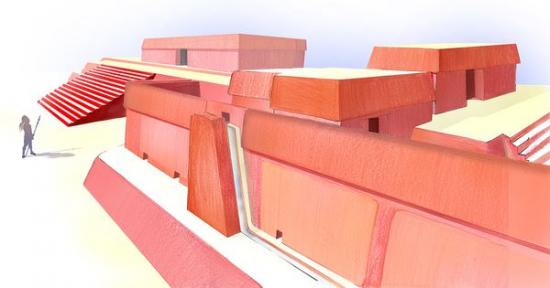PART.2

Three signet rings bearing stylized representations of faces were among artifacts deposited directly above the 1,300-year-old ruler at least a hundred years after he or she was buried.
By A.D. 800 to 900, the Maya had begun to abandon Nakum and surrounding cities in the Classic Maya collapse, though scholars don't yet agree on why.
"Nakum and the structure were already destroyed," yet the remaining citizens deposited a cache of six beads, these three shell rings, and bones of an unknown animal or human directly above the tomb, Koszkul said.
"They probably still remembered there was a large tomb [here] important for Nakum," he said.

This jade pectoral, or gorget, was worn as part of a larger necklace across the chest of the ruler buried in the upper tomb.
The glyphs on the gorget are a partial mystery: Simon Martin of the University of Pennsylvania translated the name of the person as Ixim Chan, or "Maize God-Snake." But the jade piece also contains the word "Yaxha," the name of a city 10.5 miles (17 kilometers) south of Nakum.
"We don't know how the pectoral reached Nakum. Maybe one king of Nakum brought the pectoral from Yaxha, or there is the possibility that Nakum was ruled from Yaxha," Koszkul said.
The style of the glyphs is 300 years older than the tomb itself, raising the possibility that the pectoral was kept as a family heirloom for three centuries, he added.

Illustration courtesy Breitner Gonzáles, Nakum Archaeological Project
Structure 15, the burial pyramid, is seen in the background in an artist's 3-D reconstruction.
In the foreground, a drain is visible in front of Structure 14, which may have contained a second tomb or a funerary temple that served as a temporary holding place for corpses. However, the chamber had been looted, and its function may remain unknown.
The drain could have been used to remove rainwater from both Structure 14 and 15, project director Zralka said. But considering its sophistication—channels beginning at the Structure 15 pyramid wend along Structure 14's outer wall before emerging at the trapezoidal "water mountain"—it was likely more than a purely functional drain.
Possibly a cistern located between the buildings would store water until a king would begin a "water spectacle" for citizens watching from the patio to the west.
"We think this drain may have been used in elite-sponsored spectacles of the water god," he said.